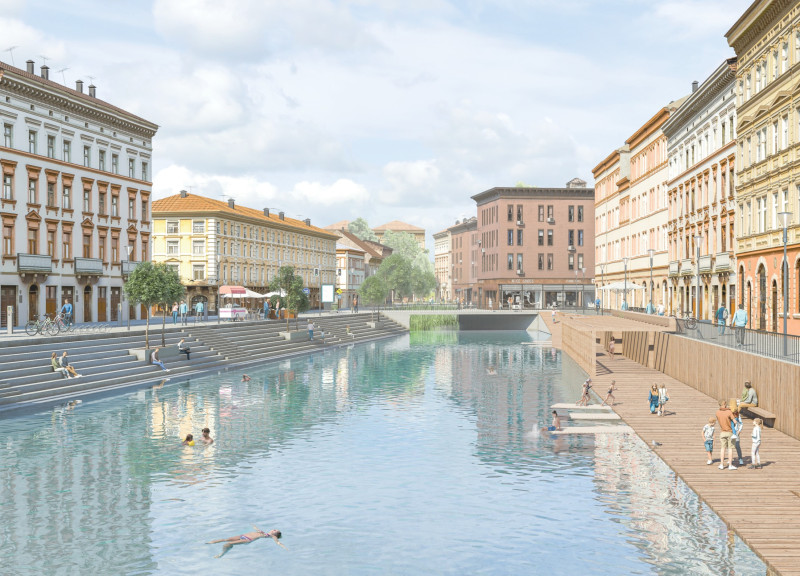5 key facts about this project
The Navigli Canal reopening project aims to restore and improve a vital urban waterway within a historically significant area. Located in a charming part of the city, the project focuses on turning the canal into both a natural ecosystem and a lively public space. The overall design concept emphasizes the purification of the canal water through a sustainable natural filtration method. This method involves using aquatic plants and layers of crushed stone and sand. The initiative seeks to address environmental issues while promoting community interaction and recreational opportunities along the canal's banks.
Restoration Process
The project begins with the careful cleaning of narrow sections of the canal. This allows for the introduction of aquatic plants that help purify the water. Water flows through large crushed stones, effectively removing contaminants before it passes through finer layers that improve quality further. This filtration process combines biological and mechanical techniques, creating a closed-loop system that supports water health and local wildlife, thereby re-establishing the canal as an important ecological resource.
Enhancing Urban Fabric
In the next phase, the design develops open pools and urban oases, integrating green spaces into the surrounding urban setting. These areas aim to reduce urban density while providing places for residents to connect with nature. By carefully designing landscapes and creating openings in the canal, the project enriches the community’s social environment, encouraging greater interaction with the waterways.
Public Amenities and Accessibility
The design incorporates a range of public amenities, including a public swimming pool and a children’s water playground close to local schools. These spaces not only enhance the user experience but also encourage physical activities and foster environmental awareness among younger generations. Access points and gentle transitions to the water create inviting spots for community engagement with the canal.
Environmental Integrity
The project also takes into account the ecological concerns related to the nearby Seveso River, which has previously posed pollution challenges. By introducing design measures to keep contaminated water from entering the historical center of the city, the project reflects a strong commitment to environmental integrity. The materials chosen, such as crushed stone and sand, are selected for their ecological benefits, supporting the natural filtration system and reinforcing sustainable practices.
The careful integration of natural systems with recreational design provides a new opportunity for the Navigli Canal to serve as a central part of community life and ecological health. The result is a revitalized space that encourages interaction and awareness, making the canal an important asset for both residents and the local environment.






















































